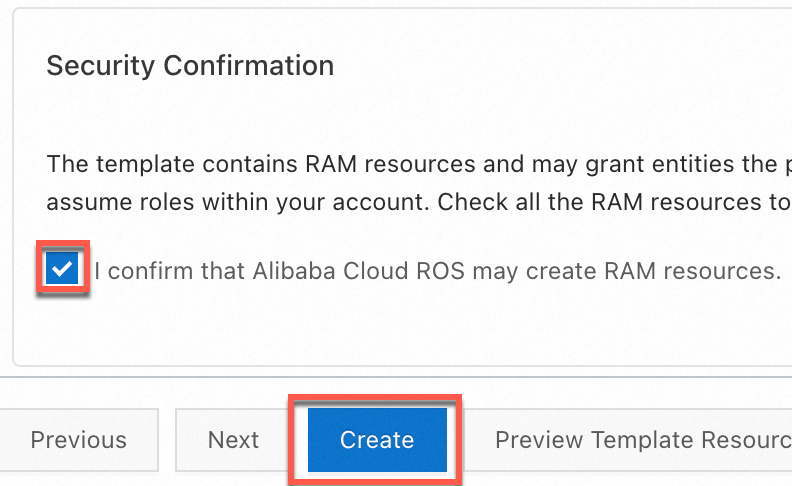This topic describes how to use Object Storage Service (OSS) SDK for Python to perform common operations, such as creating buckets, uploading objects, and downloading objects.
Notes
For more information about the regions and endpoints supported by OSS, see Regions and endpoints.
In this topic, access credentials obtained from environment variables are used. For more information about how to configure the access credentials, see Configure access credentials.
In this topic, OSS SDK for Python is initialized by using default configurations. For information about the sample code for other scenarios, see Initialization.
Prerequisites
Configure the AccessKey pair
Use the AccessKey pair of the RAM user to configure environment variables.
Linux
Run the following command on the CLI to add the configurations of the environment variables to the
~/.bashrcfile:echo "export OSS_ACCESS_KEY_ID='YOUR_ACCESS_KEY_ID'" >> ~/.bashrc echo "export OSS_ACCESS_KEY_SECRET='YOUR_ACCESS_KEY_SECRET'" >> ~/.bashrcRun the following command to allow the changes to take effect:
source ~/.bashrcRun the following command to check whether the configurations of the environment variables take effect:
echo $OSS_ACCESS_KEY_ID echo $OSS_ACCESS_KEY_SECRET
macOS
Run the following command in the terminal to view the default Shell type:
echo $SHELLPerform operations based on the default Shell type.
Zsh
Run the following command to add the configurations of the environment variables to the
~/.zshrcfile:echo "export OSS_ACCESS_KEY_ID='YOUR_ACCESS_KEY_ID'" >> ~/.zshrc echo "export OSS_ACCESS_KEY_SECRET='YOUR_ACCESS_KEY_SECRET'" >> ~/.zshrcRun the following command to allow the changes to take effect:
source ~/.zshrcRun the following command to check whether the configurations of the environment variables take effect:
echo $OSS_ACCESS_KEY_ID echo $OSS_ACCESS_KEY_SECRET
Bash
Run the following command to add the configurations of the environment variables to the
~/.bash_profilefile:echo "export OSS_ACCESS_KEY_ID='YOUR_ACCESS_KEY_ID'" >> ~/.bash_profile echo "export OSS_ACCESS_KEY_SECRET='YOUR_ACCESS_KEY_SECRET'" >> ~/.bash_profileRun the following command to allow the changes to take effect:
source ~/.bash_profileRun the following command to check whether the configurations of the environment variables take effect:
echo $OSS_ACCESS_KEY_ID echo $OSS_ACCESS_KEY_SECRET
Windows
CMD
Run the following command in CMD:
setx OSS_ACCESS_KEY_ID "YOUR_ACCESS_KEY_ID" setx OSS_ACCESS_KEY_SECRET "YOUR_ACCESS_KEY_SECRET"Run the following command to check whether the environment variable takes effect:
echo %OSS_ACCESS_KEY_ID% echo %OSS_ACCESS_KEY_SECRET%
PowerShell
Run the following command in PowerShell:
[Environment]::SetEnvironmentVariable("OSS_ACCESS_KEY_ID", "YOUR_ACCESS_KEY_ID", [EnvironmentVariableTarget]::User) [Environment]::SetEnvironmentVariable("OSS_ACCESS_KEY_SECRET", "YOUR_ACCESS_KEY_SECRET", [EnvironmentVariableTarget]::User)Run the following command to check whether the environment variable takes effect:
[Environment]::GetEnvironmentVariable("OSS_ACCESS_KEY_ID", [EnvironmentVariableTarget]::User) [Environment]::GetEnvironmentVariable("OSS_ACCESS_KEY_SECRET", [EnvironmentVariableTarget]::User)
After configuring the environment variables as described above, please restart or refresh your compilation and runtime environment, namely IDEs, command-line interfaces, other desktop applications, and background services, to ensure that the latest system environment variables are successfully loaded.
Install OSS SDK for Python
Run the following command to view the version of the Python runtime environment if the Python runtime environment is installed:
OSS SDK for Python requires Python 2.6, 2.7, 3.3, 3.4, 3.5, 3.6, 3.7, 3.8, or later.
python -versionIf the Python runtime environment is not installed, download and install the Python runtime environment.
Install OSS SDK for Python.
Run the following command to install OSS SDK for Python:
pip install oss2
Examples
Run the following sample code to create and delete a bucket, and upload, download, list, and delete objects to learn how to use OSS SDK for Python to perform common operations:
# -*- coding: utf-8 -*-
import oss2
from oss2.credentials import EnvironmentVariableCredentialsProvider
from itertools import islice
import os
import logging
import time
import random
# Configure logs.
logging.basicConfig(level=logging.INFO, format='%(asctime)s - %(levelname)s - %(message)s')
# Check whether the environment variables are configured.
required_env_vars = ['OSS_ACCESS_KEY_ID', 'OSS_ACCESS_KEY_SECRET']
for var in required_env_vars:
if var not in os.environ:
logging.error(f"Environment variable {var} is not set.")
exit(1)
# Obtain access credentials from environment variables.
auth = oss2.ProviderAuthV4(EnvironmentVariableCredentialsProvider())
# Specify the endpoint and region.
endpoint = "https://oss-cn-hangzhou.aliyuncs.com"
region = "cn-hangzhou"
def generate_unique_bucket_name():
# Query the current timestamp.
timestamp = int(time.time())
# Generate a random number from 0 to 9999.
random_number = random.randint(0, 9999)
# Specify the name of the bucket. The name must be globally unique.
bucket_name = f"demo-{timestamp}-{random_number}"
return bucket_name
# Generate a unique bucket name.
bucket_name = generate_unique_bucket_name()
bucket = oss2.Bucket(auth, endpoint, bucket_name, region=region)
def create_bucket(bucket):
try:
bucket.create_bucket(oss2.models.BUCKET_ACL_PRIVATE)
logging.info("Bucket created successfully")
except oss2.exceptions.OssError as e:
logging.error(f"Failed to create bucket: {e}")
def upload_file(bucket, object_name, data):
try:
result = bucket.put_object(object_name, data)
logging.info(f"File uploaded successfully, status code: {result.status}")
except oss2.exceptions.OssError as e:
logging.error(f"Failed to upload file: {e}")
def download_file(bucket, object_name):
try:
file_obj = bucket.get_object(object_name)
content = file_obj.read().decode('utf-8')
logging.info("File content:")
logging.info(content)
return content
except oss2.exceptions.OssError as e:
logging.error(f"Failed to download file: {e}")
def list_objects(bucket):
try:
objects = list(islice(oss2.ObjectIterator(bucket), 10))
for obj in objects:
logging.info(obj.key)
except oss2.exceptions.OssError as e:
logging.error(f"Failed to list objects: {e}")
def delete_objects(bucket):
try:
objects = list(islice(oss2.ObjectIterator(bucket), 100))
if objects:
for obj in objects:
bucket.delete_object(obj.key)
logging.info(f"Deleted object: {obj.key}")
else:
logging.info("No objects to delete")
except oss2.exceptions.OssError as e:
logging.error(f"Failed to delete objects: {e}")
def delete_bucket(bucket):
try:
bucket.delete_bucket()
logging.info("Bucket deleted successfully")
except oss2.exceptions.OssError as e:
logging.error(f"Failed to delete bucket: {e}")
# The following sample code provides an example of the main process of using OSS SDK for Python to perform common operations.
if __name__ == '__main__':
# 1: Create a bucket.
create_bucket(bucket)
# 2. Upload a local file to the bucket.
upload_file(bucket, 'test-string-file', b'Hello OSS, this is a test string.')
# 3. Download an object from the bucket.
download_file(bucket, 'test-string-file')
# 4. List objects in the bucket.
list_objects(bucket)
# 5. Delete an object from the bucket.
delete_objects(bucket)
# 6. Delete a bucket.
delete_bucket(bucket)

